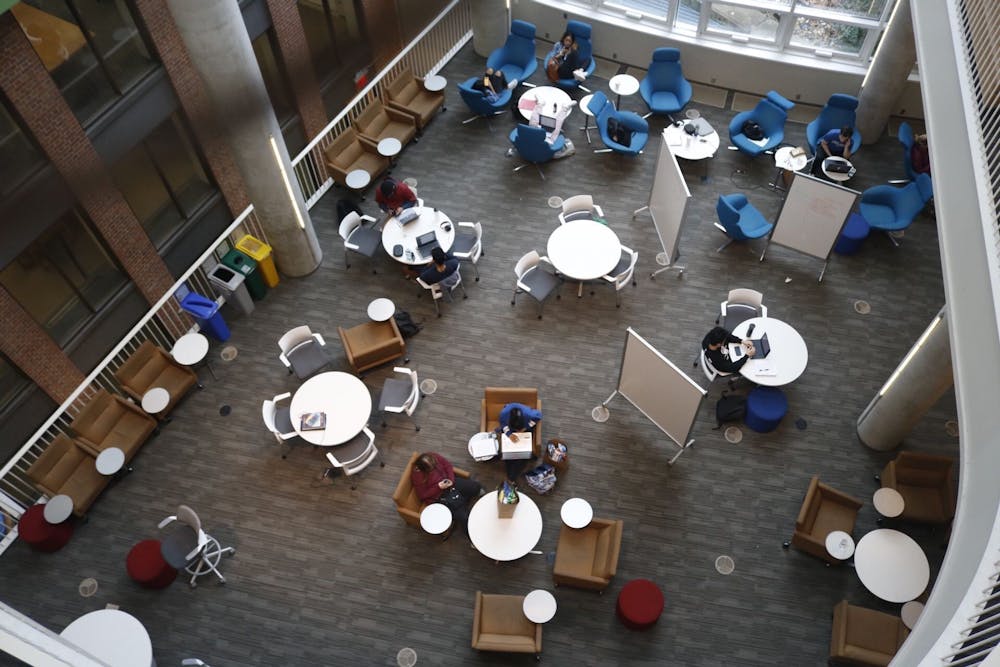As of Wednesday at 7 p.m., confirmed COVID-19 cases in the U.S. have grown from fewer than 10 in mid February to 1,276. With this rapid increase, public concern increases, and the authorities are looked to for guidance.
On the national level, the White House has created a task force including national health agencies such as the Centers for Disease Control and Prevention (CDC), National Institute of Allergy and Infectious Diseases, Food and Drug Administration, Centers for Medicare and Medicaid Services and the Department of Defense.
Led by Vice President Mike Pence, the task force is tasked with evaluating the current outbreak situation in the U.S. and issuing appropriate responses at the national level.
In an interview with The News-Letter, Professor Crystal Watson of the Bloomberg School of Public Health discussed the approach the government has taken thus far. Watson’s research focuses on public health risk management, infectious disease preparedness and response, as well as health security of the U.S. federal government.
“It is a whole government effort. I am glad that there is some coordination at the White House level,” she said.
Despite the efforts to produce a more organized response, Watson still has concerns about communications being filtered through the White House instead of coming directly from the CDC.
In an interview with The News-Letter, Adam Sheingate, a professor in the Department of Political Science addressed some concerns surrounding this task force. He believes that U.S. President Donald Trump and Pence lack knowledge of COVID-19 and have generally not been supportive of the scientific community.
Sheingate noted that this has raised some concerns regarding the credibility of the White House and that of the task force.
“[The Trump administration has] been anti-science or skeptical of scientific findings. That could prove to be problematic if the public no longer trusts or believes what the White House says,” Sheingate said.
An erosion of public trust in government will result in the public looking for information from non-government sources and becoming more susceptible to misinformation.
The COVID-19 outbreak has contributed to a rise in instances of racism against Asians. Sheingate said that throughout history, xenophobia has been a very common phenomenon in response to epidemics and disasters, as people panic and discriminate against groups that they view as outsiders of the community.
Some Republican politicians have made sinophobic comments in the media, specifically calling COVID-19 the Wuhan or China virus. Sheingate noted that adoption of this type of terminology is not accidental.
“They are intentional of some purpose, whether it’s for a domestic audience or an international audience, it’s not clear to me,” he said.
Sheingate expressed his concerns about the rise in sinophobia, but he also expects a shift in the victims of discrimination in the near future.
“As the virus proceeds in the United States… it could be focused on other groups; the poor, people who might not have regular access to health care,” Sheingate said.
Sheingate believes that the government has a responsibility to try to counteract tendencies for discrimination that come with new public health crises, however difficult that is to do.
“Not only is it morally problematic, but [also] it actually is, from a public health perspective, problematic. It doesn’t help us address the actual public health crises,” Sheingate said.
In terms of the actions taken by the U.S. government thus far, a wider testing capacity has been issued across the country, ranging from state and local health departments to laboratories in hospitals, including the Hopkins health facilities.
Lauren Sauer, the director of operations with the Hopkins Office of Critical Event Preparedness and Response (CEPAR), commented on the increased testing capacity.
“Testing is happening more broadly which will allow us a better picture of what the outbreak looks like,” Sauer said in an interview with The News-Letter.
Sheingate believes that the U.S. could not implement the public health measures that have been carried out in China. He explained that the differences between the governmental structures result in a difference in how each country responds to public health concerns.
“Interventions that are possible in an authoritarian regime cannot be done as easily in a democratic one,” Sheingate said.
According to Sheingate, a quarantine in a large geographical area is not as effective in a democratic system, where information is weakly controlled and thus easily leaked to the media.
Additionally, the centrally planned economy in China plays a role in the difference in public health responses compared to the U.S. The hospital built in seven days in China, if not under an extremely severe situation, would never be observed in the U.S.
“It’s hard to imagine the federal government or state governments directing private enterprise companies to do that,” Sheingate said.
In response to the University’s encouragement that students not return to campus following break, Sauer recommended that students consult the travel risk levels declared by the CDC and Maryland Health Department.
Both Sauer and Watson encourage the student body to look to the institution for guidance.
“As a scientific institution, medical center and a university, it is our job to do good science to help politicians inform their policy decision making” Sauer said.
Watson explained that both her and colleagues were prepared to be proactive in responding to the threat of the coronavirus.
“We are preparing contingency plans to make sure the student body and our community are safe and protected, and that is our number one priority,” Watson said.
Watson urged students to remember that they are not alone in times of difficulty.
“We have to stick together on this. It’s probably going to be a hard time, but I think if we stick together and take care of one another, we will get through it,” Watson said.





